Isuzu MU-X review and buyer’s guide
If you’re in the market for a hardcore 4X4 wagon that can tow, climb and haul, the Isuzu MU-X is not a strictly terrible idea. But there are some good reasons it’s not the best choice, either. Here’s why…
The Isuzu MU-X is more than just a 4X4 wagon, it’s a seven-seat supposedly family-friendly SUV, and it’s very popular - but can it possibly be all things to all people?
It does actually have deficiencies you should be made aware of before dropping up to $80,000 on this thing - $10,000 more than the previous version.
You won’t find an overwhelmingly positive, glowing assessment of the heavy-towing, off-roading, three-row Isuzu MU-X, but it will be balanced so that you can make an informed choice buying your family’s next new 4X4 wagon.
We’ll also pitch the MU-X against the Ford Everest for heavy-towing and the 4X4 vehicle AutoExpert does recommend, the outgoing Mitsubishi Pajero Sport.
It needs to be made clear that AutoExpert doesn’t explicitly recommend the Isuzu MU-X, for a couple of reasons, mentioned below. But that doesn’t relegate it off the possibility list if you need a rugged 4X4 wagon for serious track work, or if you have specific needs for a medium-to-heavy towing platform.
You can download the Isuzu MU-X specifications & brochure here >> and confirm the figures for yourself as we analyse the vehicle below...
A quick cautionary tale
The federal government’s New Vehicle Emissions Scheme >> taking affect in 2025, could have long-term consequences on Isuzu Ute Australia’s ability to sell new vehicles in the next few years. Not right away, but in the next three or four years the viability of selling just an MU-X (and the D-Max ute) could prove unsustainable.
The reason this is a distinct possibility for any would-be Isuzu MU-X buyers is that the brand doesn’t offer any low-emission vehicles to offset the comparatively higher-emitting vehicles in its inventory. How does this impact consumers like you?
It means the long-term existence of the brand on-shore becomes, potentially, untenable. If you buy an MU-X today, there’s no guarantee they’ll be here for the term you own it, and this might affect both resale and support.
When Holden collapsed in 2020, it promised everybody it would continue to support vehicles under warranty. Today they have effectively zero spare parts and any semblance of customer technical assistance is gone.
Alternatively, you should get in soon if you simply love the MU-X and want one in your driveway post-haste.
Or you could simply buy the other MU-X, also known as the Mazda BT-50 with a rear canopy, because Mazda does have the lower-emission offset vehicles in its fleet such as the Mazda2, Mazda3, the CX-3 etc.
Or there’s a Pajero Sport from Mitsubishi, or a Triton with a canopy. Both very good options from carmaker brands that will (highly likely) still be here in five years’ time.
RANGE & PRICING
Let’s talk about what’s right, wrong and noteworthy about the Isuzu MU-X, starting with how much gear you get in each respective model grade.
Firstly, the random lettering of the model range is confusing, but it goes from the base model ‘LS-M’ to ‘LS-U’, to the top-spec ‘LS-T’.
Now, in the LS-M and LS-U model tiers, you don’t have to have the hardcore off-road drivetrain. You can just stick to 4X2 rear-wheel drive if you have no plans to ever go off-road and, perhaps, you’d prefer to have maximum available payload, while also saving a couple of grand.
LS-M | 1.9L turbo-diesel (4x4) 4-cyl | $59,700 driveaway approx.
LS-M | 3L turbo-diesel (4x4) 4-cyl | $61,800 driveaway approx.
key features include:
8-inch infotainment touchscreen (Apple CarPlay & Android Auto both wireless), 4-speaker sound system, DAB+, voice command, 4.2-inch driver’s display screen
USB-A dashcam input, 3 x USB-C (2 x row 2, 1 x front row)
17-inch alloys (incl. full-size spare)
Push-button start (w/ proxy smartkey), manually folding door mirrors, rear parking sensors
Auto headlights, high beam & wipers; LED headlights (auto levelling), taillights, daytime running lights
Adaptive cruise control, auto emergency braking, blindspot monitoring, lane-keeping
Standard air-con, row 2 A/C vents & controls
Underbody bash guards (steel) on transmission, transfer case & sump
Rear differential lock, side steps
LS-U | 1.9L turbo-diesel (4x4) 4-cyl | $67,000 driveaway approx.
LS-U | 3L turbo-diesel (4x4) 4-cyl | $69,100 driveaway approx.
additional key features:
9-inch touchscreen, satnav, 8-speaker stereo
18-inch alloys & tyre pressure monitoring
Dual-zone climate control
Powered tailgate, pront parking sensors
Heated, powered door mirrors & auto-dimming rearview mirror
Roof rails & rear privacy glass
Powered driver lumbar support & leather steering wheel, cloth seats
LS-T | 3L turbo-diesel (4x4) 4-cyl | $79,400 driveaway approx.
adding:
20-inch alloys, Bridgestone highway terrain tyres
Front seats: heated, leather-accented, electrically adjusted (driver: 8-way adjustable, pas. 4-way adj.)
Remote engine start
360-degree camera system (incl. front and side cameras, obviously)
Electrically folding heated door mirrors
Aluminium side steps
LED interior lighting, gloss black door handles and rear window trim
X-TERRAIN | 3L turbo-diesel (4x4) 4-cyl | $81,300 driveaway approx.
20-inch gloss black alloys
Red and grey interior stitching, red ambient interior lighting
7-inch driver’s display screen
Lower body side skirt and lower rear underbody spoiler
Gloss black: wheelarches, foglamp shrouds, interior dashboard panelling, door trims
It’s basically a styling pack at this point. Isuzu has done a very good job making it seem like you get lots of extra actual equipment on the X-Terrain, but you don’t.
For example, the gloss back fog lamp bezels are garnish on what are already LED foglights, but in the official press release, they’re presented as “Updated LED fog lights with black fog light bezels and gloss black surrounds”.
And you can guarantee everything listed here in gloss black will be scratch to hell in the first year of ownership.
Next, let’s look at the MU-X’s dimensions in comparison to its key rivals so that you can decide if it works as a family-focused transport.
MU-X has a wheelbase of 2855mm, which is exactly 55mm shorter than Mitsubishi Pajero Sport - that’s 5.5cm difference - and wheelbase translates into passenger compartment space, most notably legroom. So there’s 55mm, a difference of 1 per cent, more legroom in the notionally modern MU-X. Even though the Pajero Sport, which debuted back in 2015, is often criticised for its cramped interior.
It’s a similar story with width, which generally correlates to shoulder room - yet another oft unfair criticism lumped onto Pajero Sport’s reputation. Excluding door mirrors, MU-X is 1870mm wide, Pajero Sport is 1815mm; that’s 65mm/6.5cm or 2 per cent.
In terms of cabin space, it’s going to be up to you to decide if the $6000 premium for an MU-X is going to be worth it for the sake of 1 per cent more legroom.
INTERIOR
Isuzu Ute Australia has a typing error in the technical specs of its brochure. Instead of stating the internal dimensions of the boot in litres, it tells you the dimensions in millimetres or “(mm)”.
This should in fact say that there’s 311 litres of cargo space behind row 3 when deployed, not 311mm. Ergo, there’s 1119 litres of luggage space behind row 2 (with row 3 collapsed), and 2138 litres when you collapse rows 2 and 3.
A Pajero Sport is essentially the same size as MU-X but with rows 2 & 3 down, at 1.5 metres (1575mm) of length, it can only boast 1488 litres when measuring to the roof. But Pajero Sport is 4.89m long and 1.83m high, and MU-X is 4.85m 1.82m high.
So how does Isuzu Ute find an extra 43 per cent of cargo volume yes is technically and physically smaller? Have they moved the front seats forward? Don’t know. Chances are, it’s probably a bullshit figure.
MU-X gets two outboard ISOFIX anchor positions in row 2, with three corresponding top tether anchor points. Neither top tether or ISOFIX are available in row 3 for either MU-X, Everest or Pajero Sport.
Anyway, here’s what the business end of MUX’s interior looks like:
Fortunately for MU-X, it is quoted as offering 850mm of row-3 legroom, which is 155mm more than Pajero Sport (+22 per cent), and 44mm more (+5 per cent) more than the 806mm in row 3 of Everest. But again for perspective, is it worth it to you, paying the $6000 price hike over Pajero Sport?
When you do have MU-X’s row 3 deployed, the floor panel can be lifted up to allow up to 311L of cargo space, making it 20 per cent larger than the Ford Everest and 127 per cent larger than the space remaining on Pajero Sport. But what you need to keep in perspective here is: how often are you going to have all three rows full of people and require luggage space right up the back?
An Everest can manage 1823 litres of cargo with rows 2 & 3 collapsed, lending further plausibility to the idea Isuzu Ute is fudging the number somehow, or there’s another typo on their quoted figure. This means Everest has 22 per cent more volume with all rear seating down compared with Pajero Sport.
If maximum cargo space is required, you might need to use a tape measure when you visit the dealership to check out MU-X in the flesh. However, this may also be a more trivial aspect to your purchasing decision.
In standard 5-seat mode (ie row 3 collapsed), Everest offers 898 litres when measured to the roof (which Ford Aus states in the brochure). This means it would be grossly unfair to suggest the Everest can take 78 per cent more than the 502 litres of Pajero Sport, which only measures to the top of the row-2 seatbacks - this is actually the best practice when it comes to loading stuff into any vehicle.
At least Mitsubishi tells you you’ve got 1000mm between the wheelarches and 1370mm at maximum width, 885mm from the boot floor to roof.
So, does you budget allow for having maximum cargo space and row-3 legroom, or do you need to compromise on the strict internal dimensions in order to keep within your budget? We’re talking a difference of millimetres between MU-X, Pajero Sport and Everest.
DRIVING
Unquestionably, one of the strongest reasons for considering an MU-X is its off-roading performance. Let’s look at both its strengths and its distinct weaknesses, and compare them with its competition.
Taking an MU-X off-road means you need to know exactly how much gear you can carry. Everything you take adds weight and that not only to consumes more fuel and increases the workload of the vehicle, but it also limits its capabilities dynamically.
So let’s see how much you can take depending on the model variant you choose, and how it compares with Everest and Pajero Sport.
LS-M to LS-U you will gain 20kg of additional kerb weight by adding features like bigger wheels, roof rails and other motorised components like seats and tailgate etc. You’ll go from 2135kg to 2155kg, and then stepping up to LS-T you’ll gain another 25kg to 2180kg. That’s a 45kg increase from base model to top-spec, or a 2 per cent gain, which directly cuts into available legal payload limits.
Payload on 4X4 drivelines starts at 665kg in LS-M, up to 645kg in LS-U, to 620kg in LS-T. And you’re paying an additional $11,000 to lose that weight-carrying ability. But the compromise doesn’t stop there.
Payload is quite variable between the grades, especially when you compare with the 4X2 equivalents. That 665kg in LS-M 4X4 becomes 655kg in 4X2. The 645kg limit in LS-U 4X4 is reduced to 640kg in 4X2. And the 620kg available on a 4X4 LS-T becomes 610kg - just by sticking with rear-drive only.
Maximum payload on Pajero Sport is 665kg on Exceed, and with Everest Wildtrak it’s 662kg (and an additional $13,000). So, the most affordable of this trio can also carry the most payload. (There’s more on payload in relation to rear-wheel drive and towing, below.)
Ground clearance increases as you step from LS-M to LS-U (or LS-T), from 230mm to 235mm, but breakover angle drops from 27.6 degrees to 26.4 degrees, meaning you’ll be scuffing the towbar on your way out of a steep decline or into a steep incline. But this also happens naturally as you add payload to the rear anyway.
Approach angle increases between LS-M and LS-U or LS-T, from 28.6 to 29.2 degrees respectively, thanks to the increase in wheel diameter. The breakover/ramp-over angle also increases for the same reason, going from the 17-inch alloys to 18s or 20s.
The turning circle remains 11.4 metres from kerb to kerb regardless of which variant you choose.
You also lose margin when it comes to off-road performance, although not by much. This is a theme you might notice when comparing the MU-X to Everest and Pajero Sport - they’re all very closely matched. (But what truly matters is how the brands treat you. We’ll get to that.)
Now, both Pajero Sport and Everest have broadly the same wading depth, turning circle and angles of attack when it comes to getting wet, tight turns and climbing.
Pajero Sport can go kerb to kerb in 11.2 metres, Everest in 11.8 - putting MU-X right in the middle.
Isuzu Ute Australia states in regards to wading depth that:
Up to 800mm of wading depth on all MU-X models when travelling at a consistent speed of 7km/h. Water ingress may occur if speed is not maintained or if the vehicle is static in water above 350mm.
Everest’s wading depth is the same, 800mm with the same disclaimer, and Mitsubishi makes the same for Pajero Sport at 700mm. Ground clearance for Everest is 226mm; Pajero Sport 218mm, MU-X 235mm on LS-T. It’s a difference of +/- 1cm.
Here’s why you don’t need a snorkel on your next 4WD >>
Fundamentally, MU-X uses an antiquated form of four-wheel drive, relying solely on front and rear locking differentials to transmit drive to each end, but not side-to-side.
What Mitsubishi dedicated in R&D all those years ago paid off because Pajero Sport’s greatest strength is its centre differential and Super Select II 4WD. This hardware makes it very stable and in control in sketchy driving situations where most vehicles are in 2WD but you’d rather be in 4WD.
Sealed roads and quality gravel roads are fine in the dry, but during heavy rainfall, with standing water, early morning frost or sealed beach roads finely layered with sand - the are all the kinds of surfaces where the old tractor-style 4WD system found on MU-X cannot be engaged in 4-High at the risk of ‘wind up’ and damaging critical components.
Ford offers Everest with a full-time 4X4 ability. It uses a centre electromechanical transfer case (EMTC) that sends anywhere from 0:100 to a 50:50 drive split using a set of clutch packs to distribute drive. Everest defaults to a 40:60 drive split front-to-rear, but will redirect more torque to the front if wheelspin is detected at the rear wheels.
MU-X and Everest do not have a centre differential like in Pajero Sport, which allows full-time 4X4 on high-traction surfaces, but the Everest does have a drive system that works in the same way. MU-X does not.
Using MU-X in the same high-traction environments where Everest and Pajero Sport can will put strain on the Isuzu’s driveline. What this means is in driving conditions such as heavy rain, light frost, good quality gravel roads and all of these examples while towing or fully loaded, would all be much safer driving in 4X4.
In this respect, you need to consider if you actually have use for a 4WD that is designed to operate in sub-par driving conditions (sealed or unsealed), costing several thousands of dollars less. Or do you want a more agricultural 4WD with the slightly better breakover angle?
Perhaps you want a vehicle better suited to being pushed hard (nee thrashed mercilessly) when venturing into the wilderness, in which case MU-X is a ideally suited to the mechanically unsympathetic. For example, some off-road warriors like to emulate Elon Musk by way of moving fast and breaking stuff.
Others like to avoid the bogs and dangling from cliffs via their winch, opting for a more conservative approach to four-wheel driving. It’s like comparing 4WD 24/7 to Andrew St. Pierre White. And that’s not to suggest a Pajero Sport can’t handle the hard stuff, because it absolutely can. MU-X just takes a less elegant approach to off-road driving.
TOWING
The MU-X is quoted by Isuzu Ute Australia as being able to pull up to 3500kg of braked trailer, with 350kg of download applied to the towball. See, says it here (click to enlarge):
Would you look at that fine print tucked right down the bottom (so easy to miss). They’re implying here that an MU-X needs a genuine towbar kit in order to achieve its macho 3.5 tonnes of towing capacity. This isn’t the case, they just want you to think you need to spend more money to buy the genuine towbar.
It’s not often discussed, but fitting genuine towbar kits does not mean they are warranted for the life of your vehicle. Isuzu Ute, for example, states that if you fit a genuine towbar, your warranty period is limited. (click to enlarge below)
If you’re struggling to read the fine print, it says:
Warranty for Isuzu UTE Genuine Accessories fitted by an authorised Isuzu UTE Dealer at the point of sale of a new Isuzu UTE vehicle are covered for three (3) years or 100,000 kilometres, whichever occurs first;
…Genuine Accessories fitted by an authorised… Dealer after delivery… are covered for one (1) year or 40,000 kilometres from the date of accessory purchase, whichever occurs first;
…Genuine Accessories not fitted by an authorised… Dealer are warranted from the date of purchase for one (1) year or 20,000 kilometres, whichever occurs first.
On the balance of probability, this may not be of concern to you, but you might find it interesting to note that the six-year warranty on MU-X does not extend to even a genuine towbar fitted prior to delivery. But don’t be up in arms about this, because it’s actually pretty fair given that a towbar will be subjected to a surprising amount of wear and tear in its first years of life. And typically, wear-and-tear items are not covered by warranty, such as brake pads, tyres or clutches.
Also, this is not as uncommon as you might think among the brands. Mitsubishi Australia warrants its towbar kits for 5 years or 100,000 km when fitted prior to delivery - so more time, but same mileage as Isuzu. If you fit the genuine towbar after taking delivery of your Pajero Sport, you get whichever is the greater between: 12 months or 20,000 km (whichever occurs first); or the balance of the standard 5 years/100,000 km warranty. Unless of course you’re exclusively servicing with Mitsubishi, making you eligible for the 10-year/200,000km warranty, in which case they’ll honour the towbar for that period.
Ford simply states that you get 5 years/unlimited kilometres of warranty with genuine accessories fitted prior to delivery, such as on an Everest.
As for towing heavy loads, this is where MU-X is the most compelling as a value proposition, because it’s several thousands cheaper than the equivalent Ford Everest.
But let’s make it very clear, putting the maximum 3.5 tonnes of trailer on the back of an Isuzu MU-X, which at its heaviest kerb weight is 2.18 tonnes, is a fundamentally bad idea. In this report, I explain the applied physics of towing 3500kg with a ute >>
Put simply, a trailer that heavy can very easily overwhelm the MU-X’s ability to maintain stability, thanks to the trailer’s 1380kg weight advantage. In the wrong set of circumstances, a caravan, boat, mini excavator or tool trailer could easily push an MU-X off the road.
Even if you were fortunate enough not to be shoved into the trees, down the embankment or off the cliff’s edge, a trailer that heavy also has the ability to rotate the MU-X (or any other light passenger SUV) because pig trailers are dynamically compromised in pitch and yaw.
If you were to hypothetically put 3500kg on the back of an LS-T (pictured), with 350kg of download on the towball, and 80 litres of diesel on board, you’re going to be limited to just 270kg of payload. That’s before you even climb into the driver’s seat, at which point you subtract your weight from that 270kg payload, leaving the rest for anybody else or anything else. Not very practical.
If you keep to a more conservative towing assignment, around the 2000-2500kg mark, you’ll be looking at between 470kg-420kg of payload, which is much more realistic in terms of actually taking a family on holiday, with clothing and an eski. Remember: every single item you put into the vehicle is payload and has to be subtracted from the GVM limit (2800kg on an LS-T, for example).
Obviously that GVM limit applies across the 4X4 range, but because the kerb weight reduces from LS-T to LS-U and to LS-M (because: fewer features), your available payload increases. LS-U can take 645kg, which becomes 595kg if you add a 250kg towball download, because the trailer weighs 2500kg. All because you chose to forgo bigger wheels, powered tailgate, partial leather etc.
Rear-wheel drive MU-X is an interesting concept if you don’t intend to take your caravan, boat or camper to anywhere but manicured campsites at the plethora of caravan parks peppered across the country. And fair enough, too.
A RWD LS-M (base model) is $5000 cheaper than the 4X4 version, but gets a reduced GVM of 2700kg (-100kg). So when you subtract the 2045kg kerb weight, you’re left with 655kg of payload; add 250kg worth of towball download, that’s 405kg of payload. Do the same to a top-spec LS-T 4X2, you get 610kg of payload, or 360kg when adding 250kg of towball download.
What’s interesting is looking at this MU-X GVM reduction from 4WD to RWD, with the Ford Everest in the same driveline comparison - it’s the same story, albeit bigger numbers.
A RWD Everest Trend has a 3000kg GVM (payload: 722kg; kerb wt: 2278kg). But a 4WD Trend gets a 3100kg GVM, but with 715kg payload because the kerb weight is 2385kg.
An Exceed-spec Pajero Sport has a 279kg kerb weight disadvantage when it comes to towing, which is why I only class it in the same towing weight capacity as Everest and MU-X, pulling 2000-2500kg. So you have a greater working safety margin with Everest than with MU-X, which has more margin than Pajero Sport.
Overall, you need to consider how much stuff you intend to take, what kind of driving you’re going to be doing, and assess what kind of trailer you intend to tow. My recommendation: keep it as light as possible, because you don’t have the kerb mass in an MU-X as you would in an Everest.
ENGINE
MU-X shares the same 3-litre inline four-cylinder turbo-diesel found in D-Max and Mazda BT-50 - so if you cannot get a D-Max or MU-X due to stock shortages, there are plenty of BT-50s getting around.
You could easily add a tray canopy and simply pretend its a D-Max, only with a nicer interior. (Driving a ute for work doesn’t have to be hard-plastic hell like in a 79 Series - we’ve moved on from those days.)
Anyway, the MU-X engine makes peak power of 140 kilowatts at 3000RPM, which is right in the middle of Pajero Sport at 133kW @ 3500RPM and Everest at 184kW @ 3250 revs. Certainly, the Everest is the powerhouse, Pajero Sport is the conservative, affordable choice here, and MU-X is the filling in this sandwich.
My primary issue with this “4JJ3-TC” engine is that it’s the same powerplant that started life in the Holden Jackeroo and Rodeo back in the 1990s. It’s literally the same engine but with updated with modern plumbing.
You can watch (or read) my full rundown on the D-Max from when it launched in Australia during the dark times of 2021.
Fuel consumption on all 4X4 models is 8.3 litres per 100km on the combined cycle test, and it’s 7.8 litres per 100km for all 4X2 models. That’s a 6 per cent advantage in fuel consumption by sticking to rear-wheel drive if towing-and-touring is going to be your thing. Also, there’s not manual option in an MU-X like there is in lower-spec variants of the D-Max.
Overall, there aren’t many things to criticise nor praise about this engine or transmission other than it is reasonably reliable, although hardly the truck-like monolith of indestructibility Isuzu Ute would have you believe. I’m sure every time someone from the actual Isuzu Trucks Australia sees that referenced they cringe at the idea a Nissan-owned ute-maker could possibly hold a candle to the reputation among the trucking industry for a real Isuzu truck.
So yeah, the MU-X engine is okay, without being excellent - it’s mediocre - and that’s perfectly acceptable to many potential buyers. Just like when buying a Toyota, sometimes that’s all you want.
If you want a more affordable MU-X and you don’t specifically want or need 4-wheel drive, Isuzu Ute now offers this ute-based wagon with their 1.9-litre turbo-diesel engine.
This is purely to make it a price leader at just $42,000 - and that’s allowed, there’s nothing shifty about doing so. In fact, it’s a powertrain that makes much more sense in the context of how this vehicle is most likely going to be used. If you’re planning to tow big heavy stuff on a regular basis, the bigger 3-litre inline four-cylinder has much more grunt for such a task.
But the 1.9 has 110kW which is not just 21 per cent less than the bigger engine’s 140kW, it’s less than virtually every other competitor. The old Mitsubishi Triton copped it (for years) among the dual-cab ute community for nothing having enough grunt with 130kW on-tap, yet Isuzu expects you to load up for the holidays and hitch something on the back.
And it’s not as if you save weight with the 1.9 - in fact Isuzu Ute says the kerb weight is exactly the same - meaning it’s going to be gutless with a full load on board, and yet they suggest the maximum towing capacity is still 3000kg in the manner of a Pajero Sport. Except the Mitsubishi has 15 per cent more power, and you can have a mid-spec 4X4 GLX which costs $3000 less than an LS-M.
For more comparison here, the GLX Pajero Sport has a 62 kW-per-tonne power/weight ratio. The top-spec LS-M MU-X with the 1.9 engine has just 55 kilowatts per tonne. Yet the maximum permitted payload is 735kg (just 5kg more than the Pajero Sport). But the cheaper Mitsubishi is going to cope with any towing or hauling assignment much better.
The one minor advantage to the 1.6 is its fuel economy, but even then, it’s still only neck and neck. For the 3-litre engine, the combined quoted fuel consumption is 8.3 litres per 100km. In the 1.9, the best it can manage is 7.4 litres, while the Pajero Sport quotes 8 litres exactly. That’s an 8 per cent difference over the Mitsubishi and 12 over the bigger-engined MU-X.
The problem for the 1.9 is that it simply doesn’t make enough power where it’s needed, low in the revs, to make meaningful use of its supposedly better fuel economy. So it has to rev harder to offer the same performance as the Pajero Sport. Higher revs means greater fuel consumption.
I'll help you save thousands on a new Isuzu MU-X here
Just fill in this form.
No more car dealership rip-offs.
Greater transparency.
Less stress.
SAFETY
The MU-X was crash tested locally in 2022 and received a five-star safety rating from ANCAP.
You can download the Isuzu MU-X crash test report here >>
Full credit to Isuzu for having the economic fortitude to get row 3 curtain airbags baked into MU-X’s design.
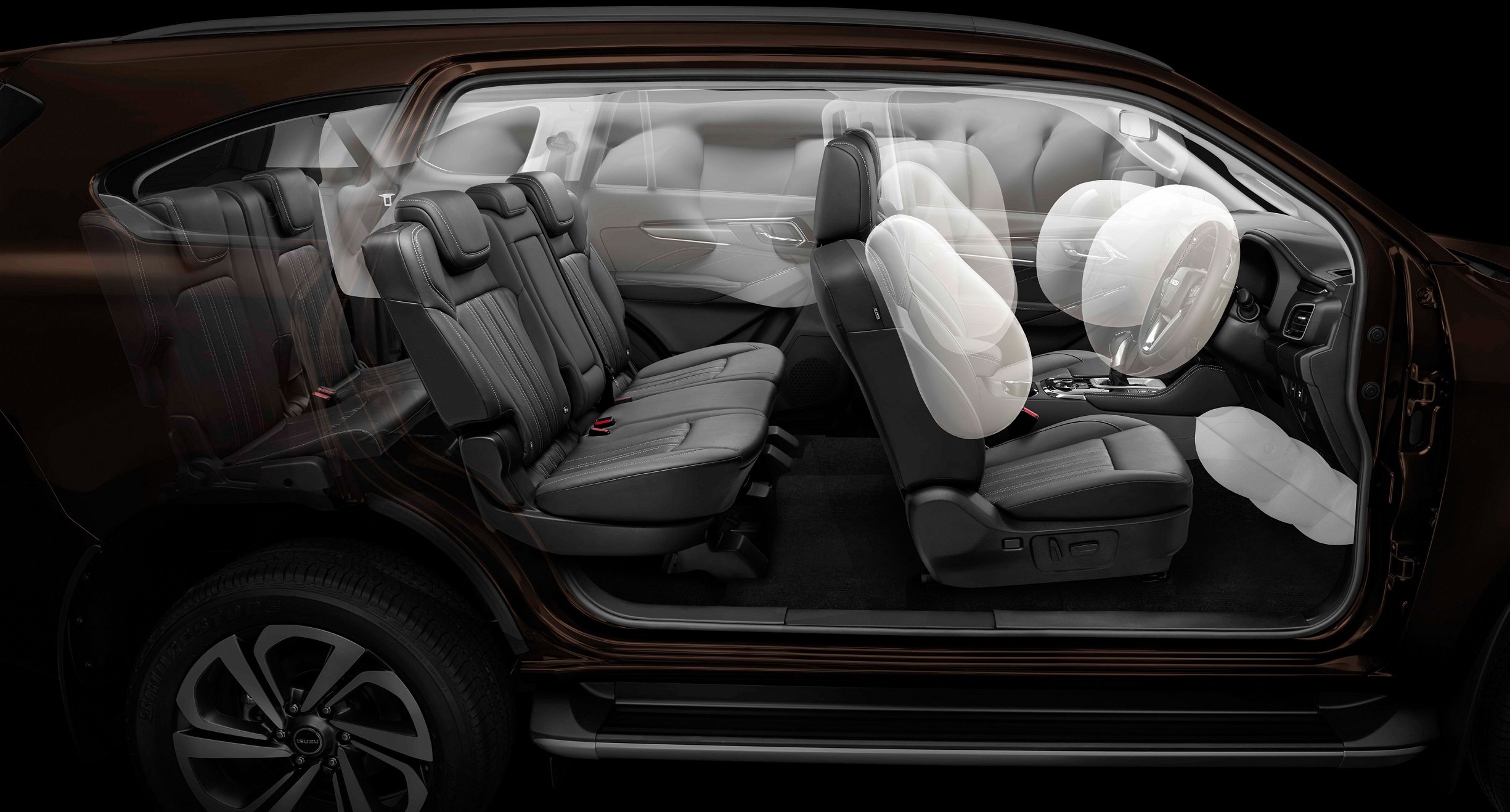


But, rivals like Mazda CX-9, Toyota Kluger, Ford Everest, Mitsubishi Pajero Sport, LandCruiser 300 and hell, even the old tank we know as Nissan Patrol, all have row 3 curtain airbags.
Despite the hodgepodge of crash rating amalgamations going on for the MU-X which includes multiple tests over several years, with updates to the vehicle prior-to and as a result of, here’s what the current version gets:
Adult Occupant Protection it scored 86% (33 out of 38);
Child Occupant Protection it scored 85% (41 out of 49);
Vulnerable Road User Protection it got 69% (or 37 out of 54); and
Safety Assist it got 84% (13 out of 16)
At this point it needs to be made clear that the latest ANCAP crash testing protocols have not been applied to the Mitsubishi Pajero Sport in the same way more recent protocols from 2022 have been applied to MU-X and Ford Everest - both of which are five-star rated with decent scores respectively.
Pajero Sport was last tested back in 2015 when that platform was new and when many current tests didn’t exist, such as the oblique pole test (at a 75° angle) and the full-width frontal crash. But it’s very easy to be mislead by the currency (or lack thereof) as you might see it on the ANCAP website, which fails to highlight that almost all of the required ‘safety assist’ tech, like auto emergency braking, lane-keeping and adaptive cruise control.
Reason for telling you this is to inform you that a current Pajero Sport just isn’t tested to more recent protocols like an Isuzu MU-X. Is the Mitsubishi some antiquated shitbox that slipped through the cracks? No, but it’s not a brand new platform either, so it wasn’t designed to the same standards. It simply hasn’t been tested to today’s protocols, meaning we simply don’t know and can’t really compare how it crashes to an MU-X.
What we can do is look at the Isuzu in the 64km/h frontal offset test (with a 40% overlap hitting the mobile deformable barrier), and see that the MU-X collides with the simulated vehicle which is only doing 50km/h. While the test penalised the MU-X 4 points for unacceptable levels of damage to what would be the occupants of the ‘other’ vehicle, that doesn’t make it a failure.
According to ANCAP’s engineers’ report, this test:
“…provides an insight into vehicle compatibility (the risk presented to other vehicles in a frontal crash)
As a result of the test, ANCAP concluded that:
The front structure of the Isuzu MU-X presented a higher risk to the occupants of an oncoming vehicle…”
This is less than ideal, but overall, MU-X is a very safe vehicle to be driving if you’re unfortunate enough to be in a crash.
Ford Everest scores similarly, getting 86% for adult occupant protection (the destructive tests), 93% for child occupant protection (the kid restraint stuff), 74% for pedestrian protection, and 86% for safety assist (the tech stuff that tries to stop you crashing in the first place). MU-X lacks reverse auto-emergency braking, which Everest has and Pajero Sport lacks as well.
When the new Pajero Sport arrives in 2025 you can expect it will meet current safety expectations. It may even use the new Triton’s crash test data in the manner of its predecessor.
DRAWBACKS
The Isuzu MU-X is, in general terms, not a bad vehicle. In fact, it’s pretty good in many respects, striking a balance between simplified off-roading/towing and more innovative powertrain capabilities. It’s a standard claw hammer to the Everest’s mini-sledge approach and Pajero Sport’s ball pein execution.
But the main problem with MU-X is Isuzu Ute Australia and its meandering, half-arsed approach to customer support, broadly.
Case in point is how IUA treated Daryl Imray in 2022. Read or watch Part 1 of his D-Max story here >> and then Part 2 The Resolution, here >>
My main criticism is Isuzu Ute here is that they treat consumers who would be their biggest word-of-mouth marketing advocates. Instead of giving customers due credence when approaching IUA’s skant dealer network with genuine problems that need fixing, Isuzu offers the cold shoulder. Daryl Imray could’ve been a very cheap brand ambassador; instead, he reached out to AutoExpert because he was being thrown under the bus with his D-Max with a perfect service history.
There is also a D-Max & MU-X related class action currently under way since July 2022, regarding dodgy welding in the engine bay, and dodgy DPF systems. Check out my report on the Isuzu Ute class action here >>
CONCLUSION
Thing is, carmakers are allowed to have faults in their vehicles. Even if they have a few early reliability issues of known defects, that’s tolerable if the brand is quick to jump up and get it fixed. There’s no such thing as a perfect car, and recalls, in-service service campaigns and updates happen all the time.
But a brand that makes you jump through hoops of fire while juggling chainsaws is not acceptable. It’s why I don’t actively recommend you buy an Isuzu MU-X for off-road driving or heavy towing - because the brand has shown in very recent history it is prepared to ignore your rights to a remedy under consumer law in the event of something major failing.
Isuzu Ute Australia won’t like this section of this report, but having this brand reputation dialled into your process for finding the best new car is what helps you make an informed choice as a consumer.
And to be fair, in all likelihood, you probably won’t have any major issues with your MU-X; in fact we can even help you avoid the dealership trickery and buy one if you’re prepared to make that decision. You’ll most likely have a good experience with it and it’ll serve you well as a general purpose towing, adventuring, seven-seat 4X4.
Just know that, at this point, you’ve been warned.



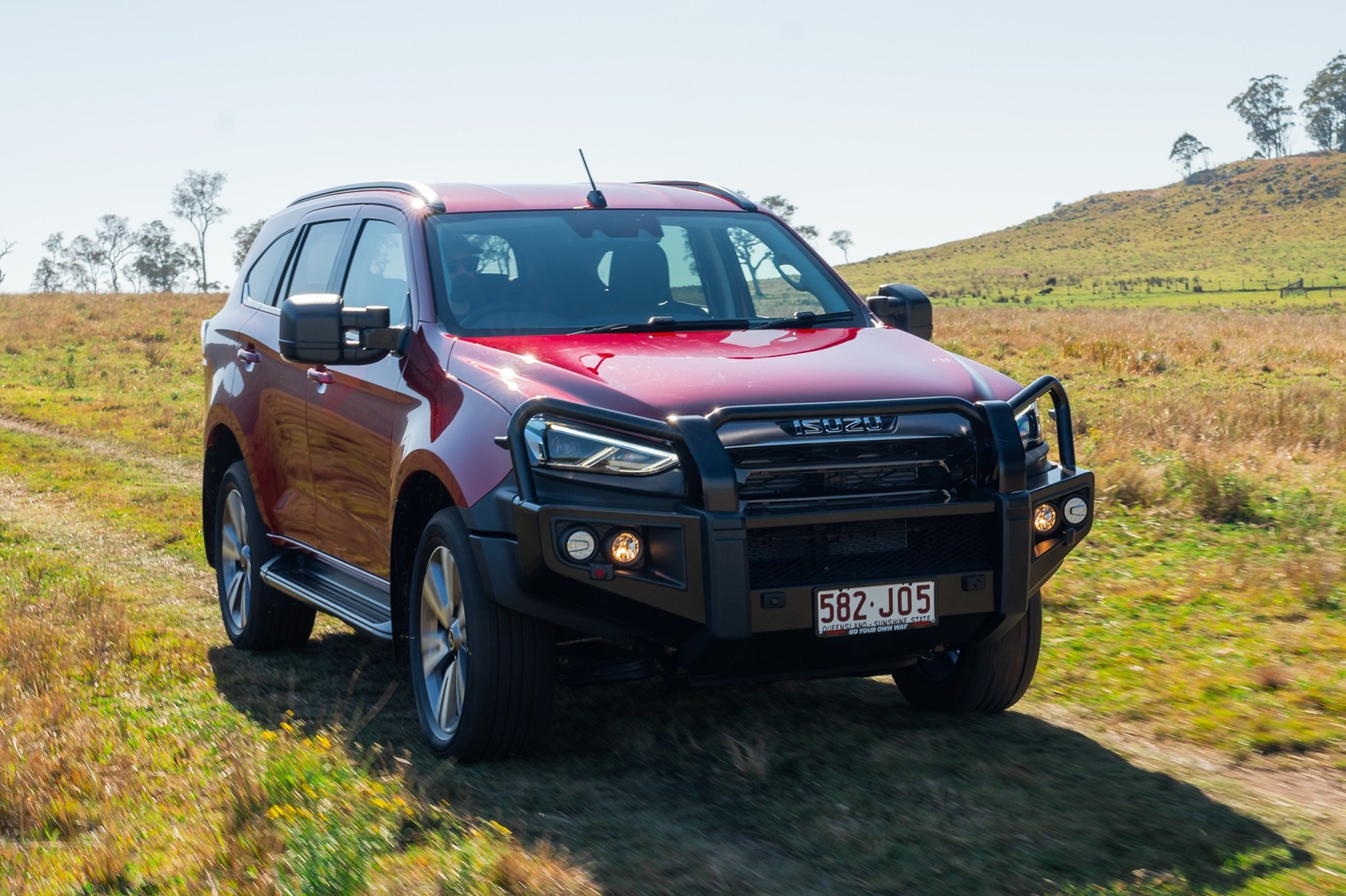
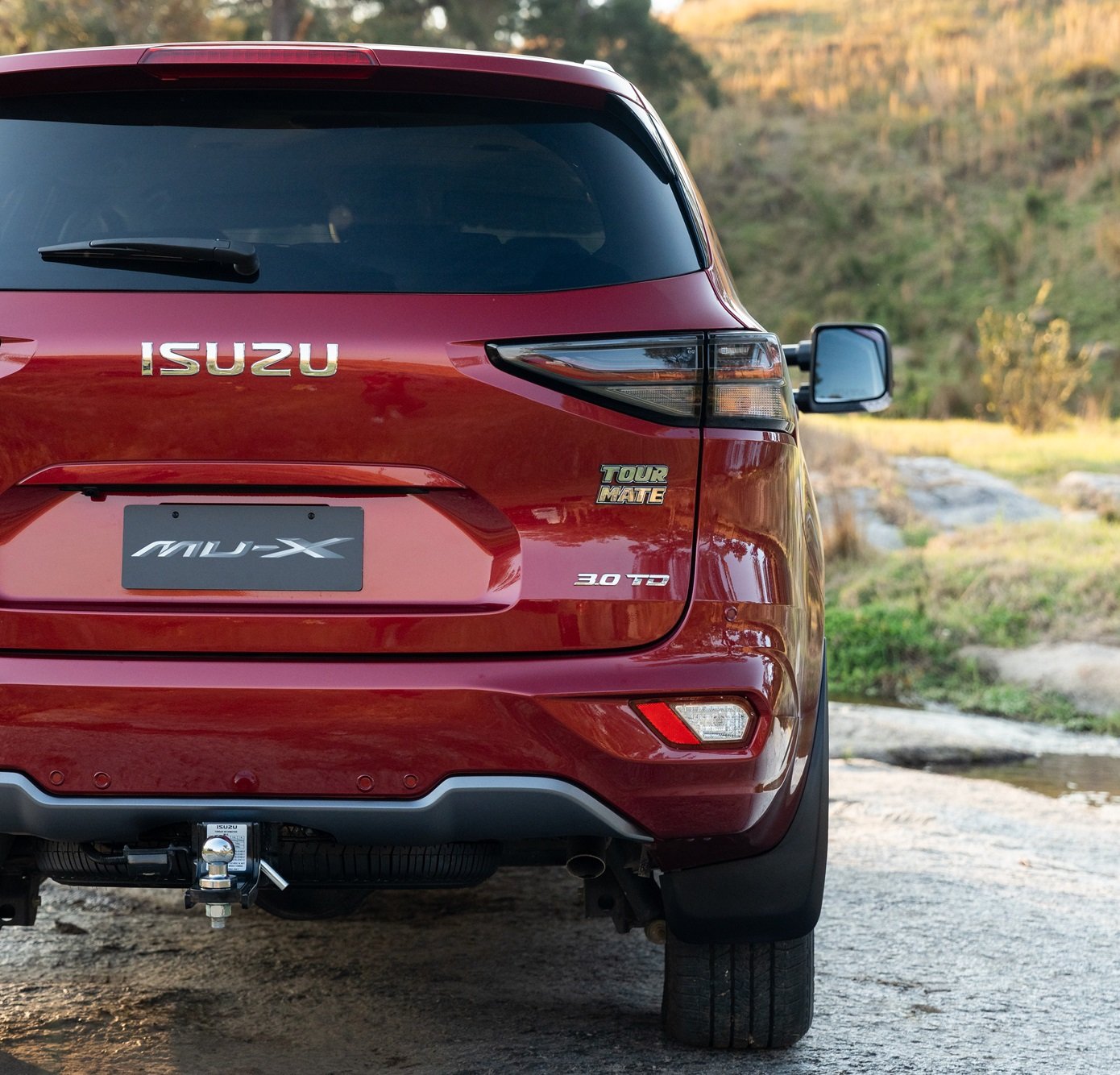
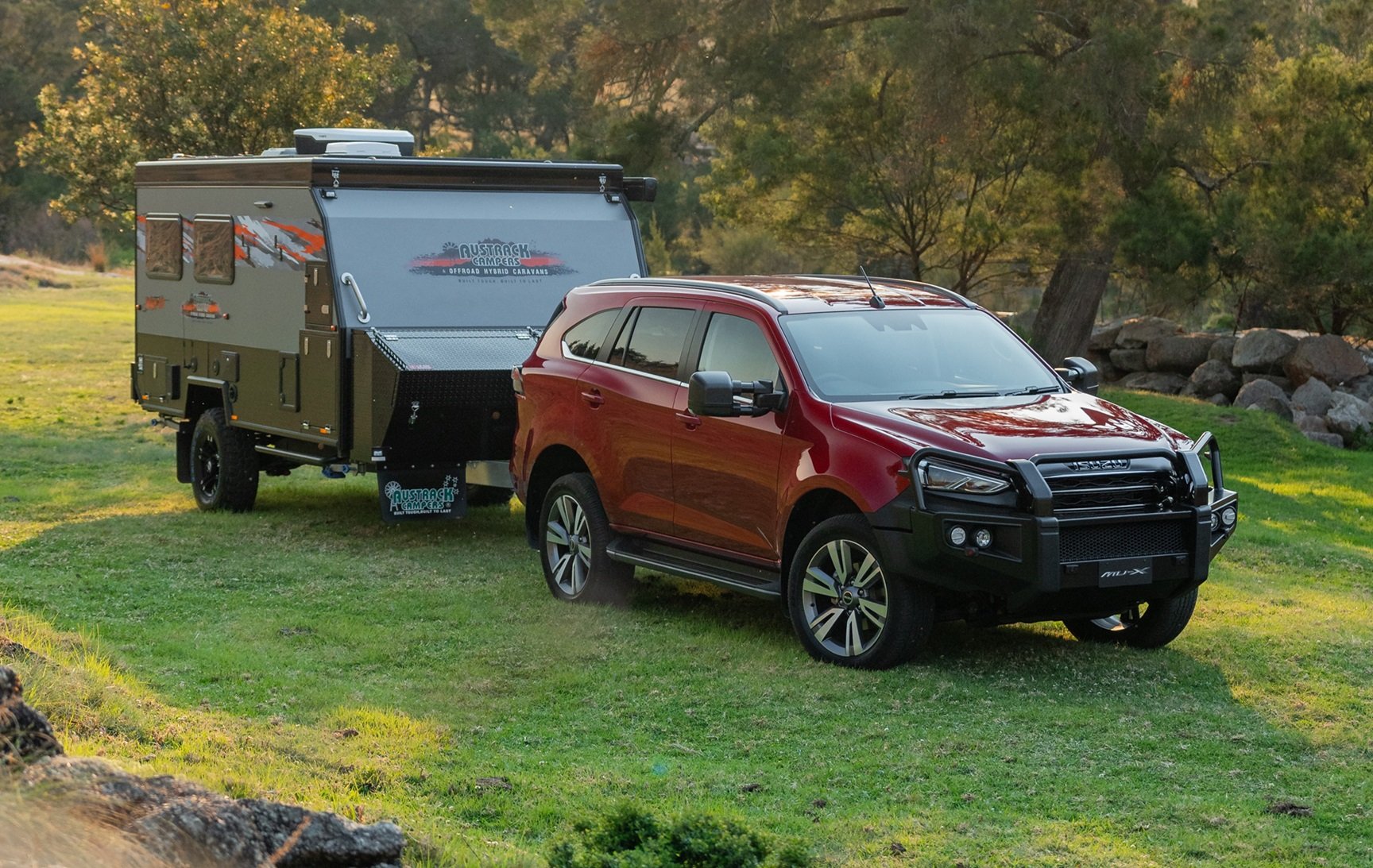










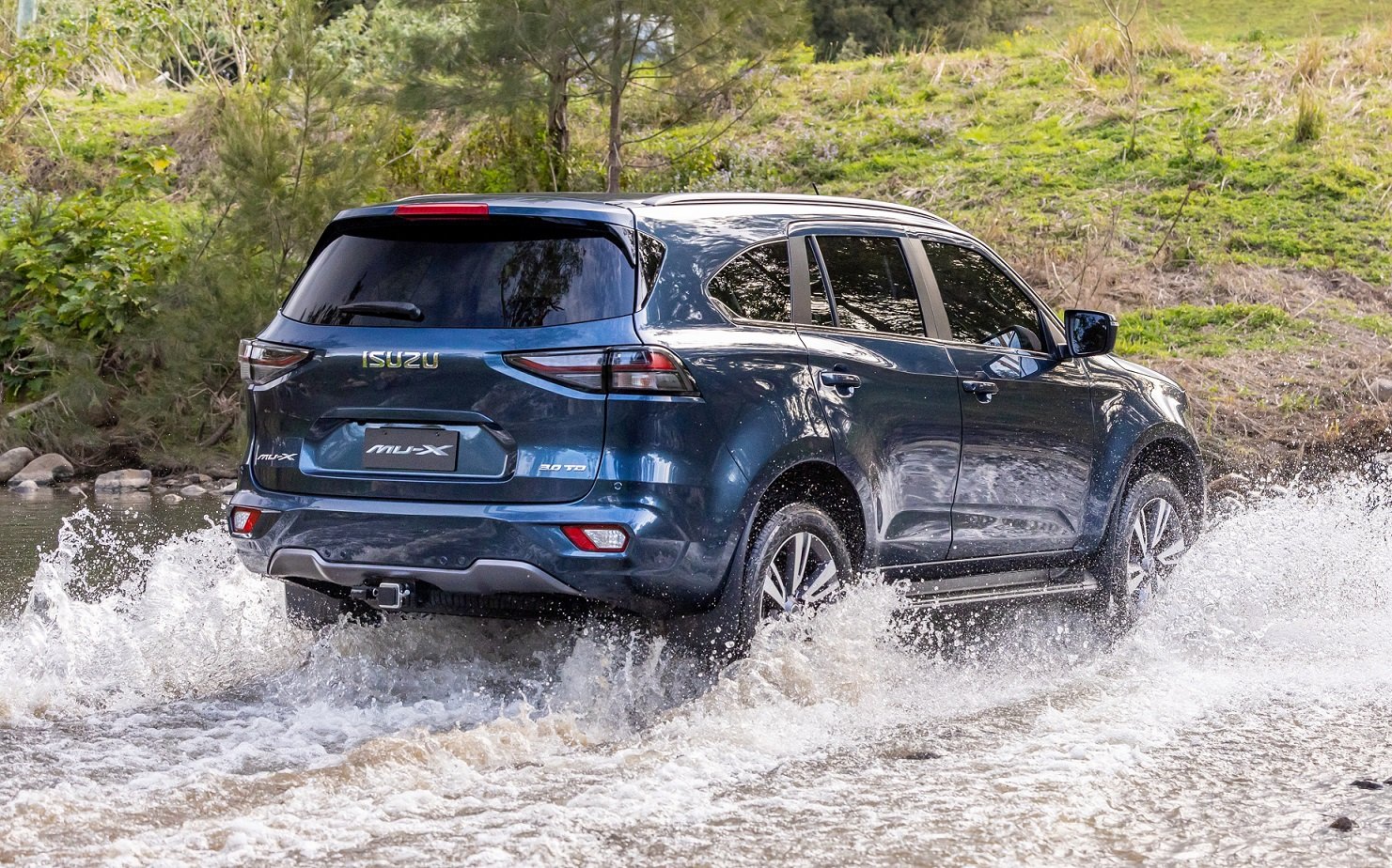




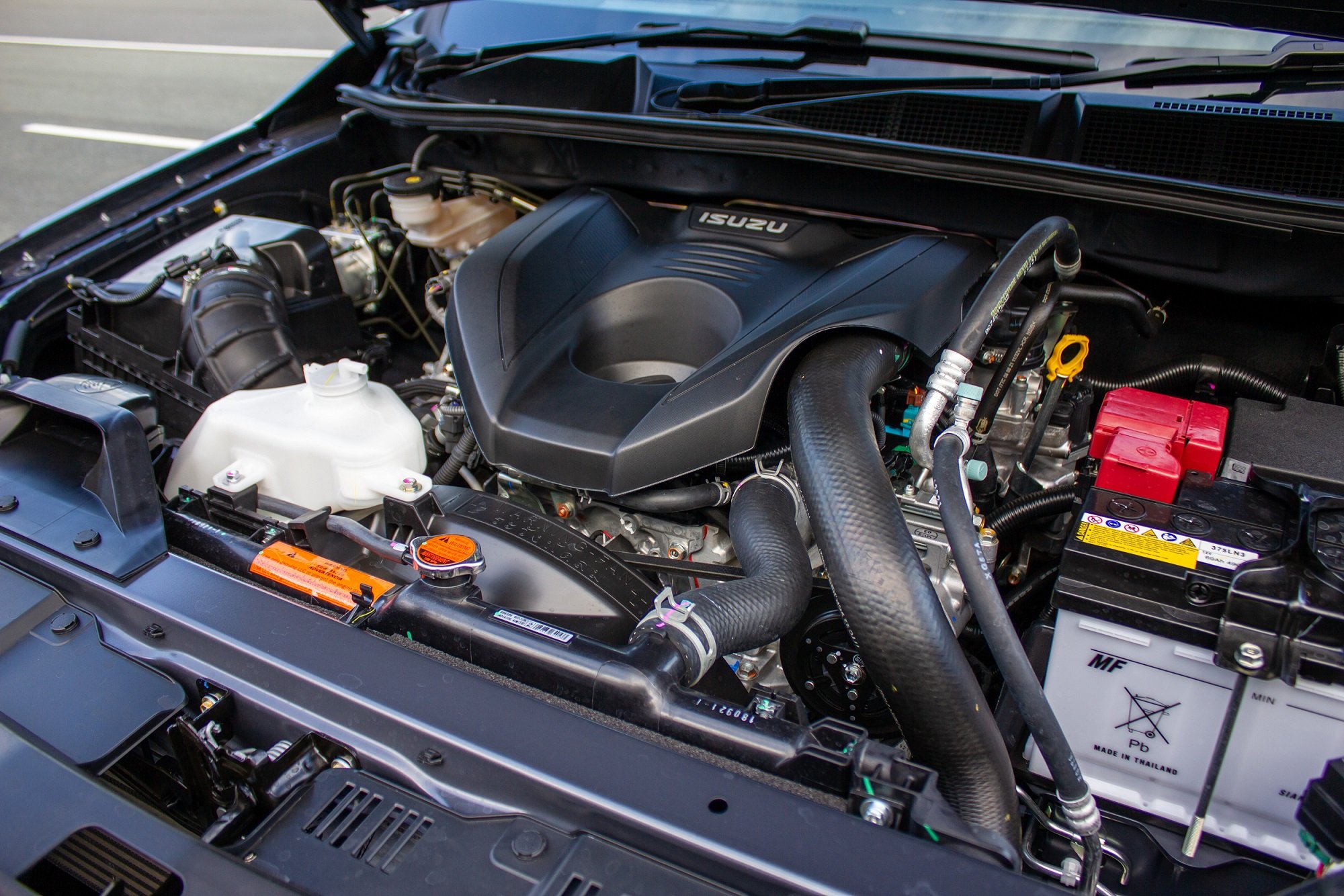

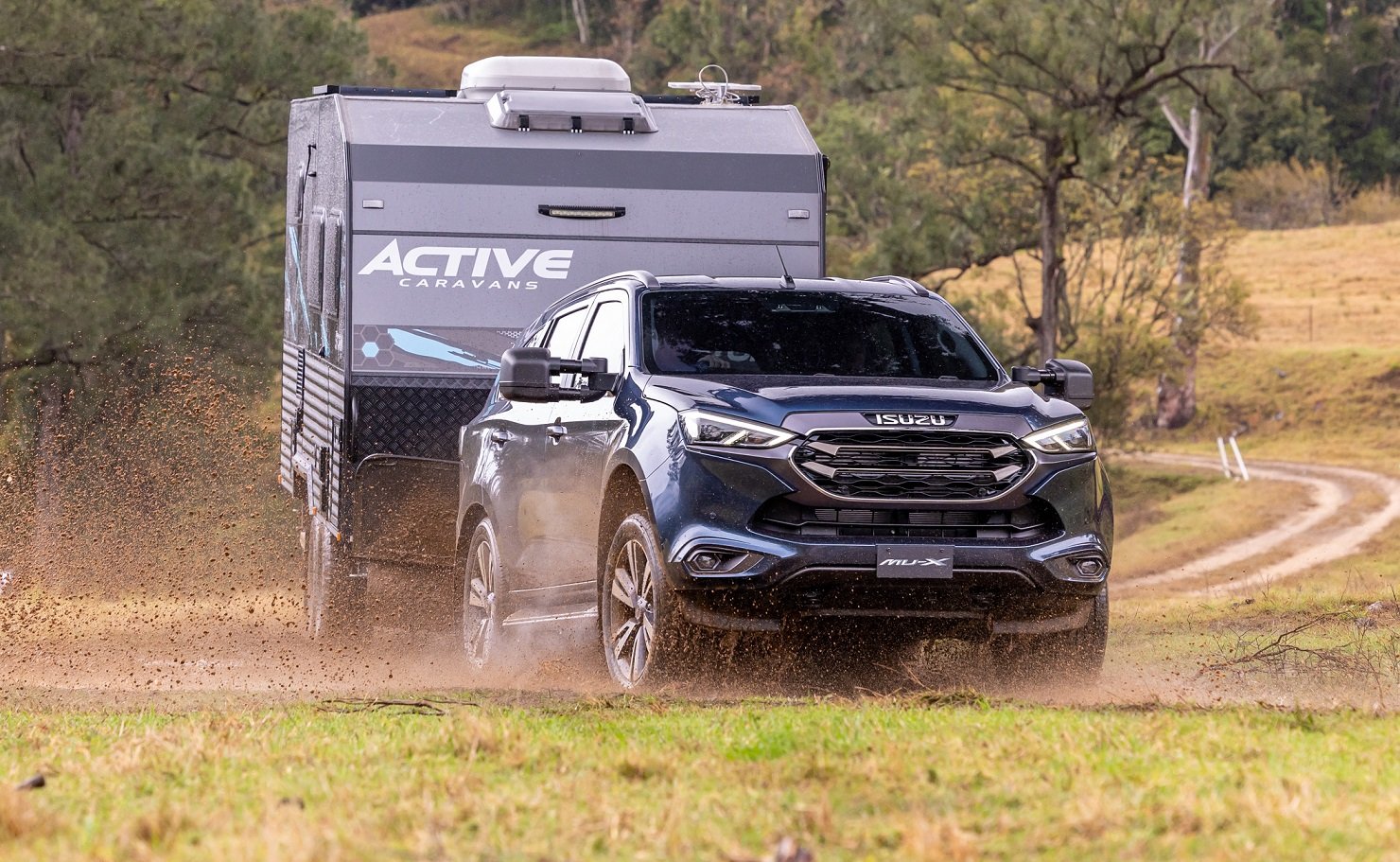











xxxx